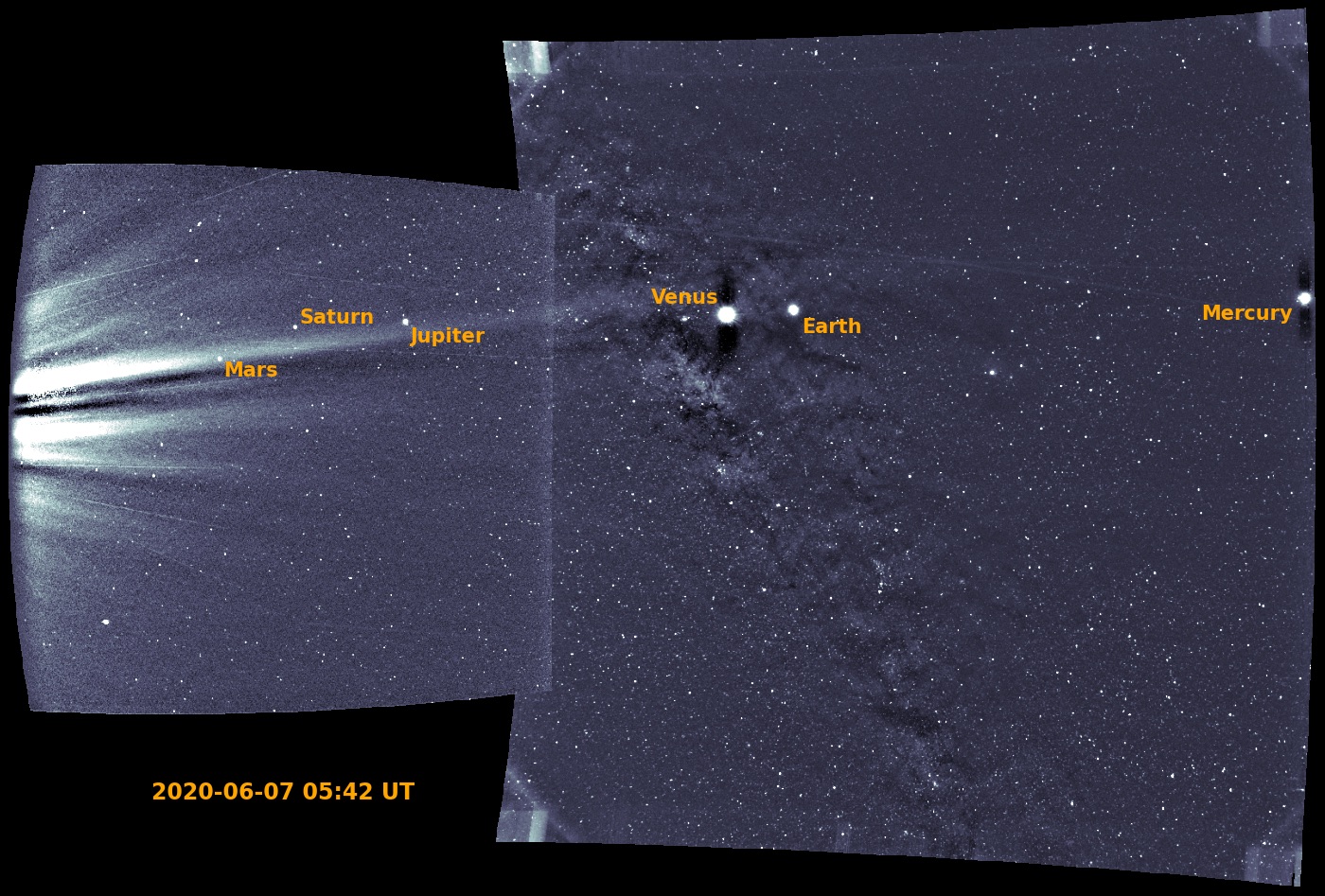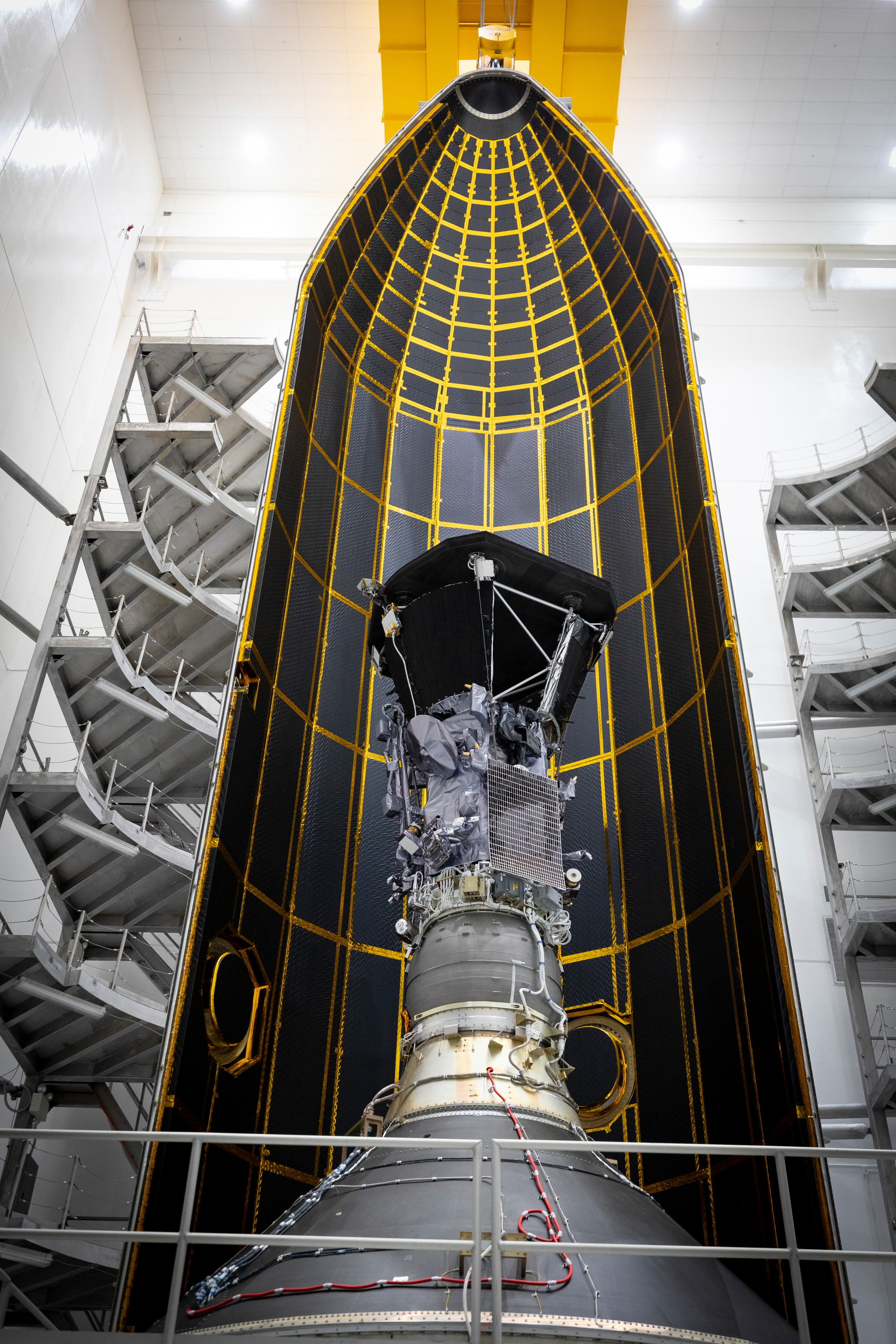Parker Solar Probe
From Spacefaring
The Parker Solar Probe is a NASA space probe launched in 2018 to make observations of the Sun's outer corona.
Website,
Wikimedia, Wikidata
NASA Solar Probe; PSP; Solar Probe Plus; Solar Probe+
-
Location: KML, Cluster Map, Maps,
{"selectable":false,"showCurrentTime":false,"width":"100%","zoomMin":100000000000}
 The view from Parker Solar Probe's WISPR instrument on Sept. 25, 2018, shows Earth, the bright sphere near the middle of the right-hand panel. The elongated mark toward the bottom of the panel is a lens reflection from the WISPR instrument.
The view from Parker Solar Probe's WISPR instrument on Sept. 25, 2018, shows Earth, the bright sphere near the middle of the right-hand panel. The elongated mark toward the bottom of the panel is a lens reflection from the WISPR instrument. Parker Solar Probe was making its closest approach to the Sun on June 7, 2020, when its Wide-field Imager for Solar PRobe (WISPR) captured the planets Mercury, Venus, Earth, Mars, Jupiter and Saturn in its field of view.
Parker Solar Probe was making its closest approach to the Sun on June 7, 2020, when its Wide-field Imager for Solar PRobe (WISPR) captured the planets Mercury, Venus, Earth, Mars, Jupiter and Saturn in its field of view. The view from Parker Solar Probe's WISPR instrument on Sept. 25, 2018, shows Earth, the bright sphere near the middle of the right-hand panel. The elongated mark toward the bottom of the panel is a lens reflection from the WISPR instrument.
The view from Parker Solar Probe's WISPR instrument on Sept. 25, 2018, shows Earth, the bright sphere near the middle of the right-hand panel. The elongated mark toward the bottom of the panel is a lens reflection from the WISPR instrument.



